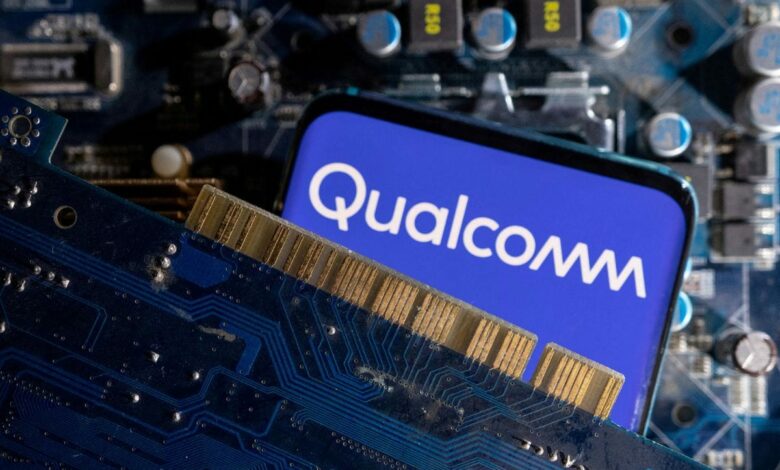Qualcomm, arm climb after win signals smartphone rebound

Shares of Qualcomm and Arm Holdings, two chip companies heavily dependent on the smartphone market, rose Thursday after delivering earnings reports that signaled a tentative recovery in demand.
Both companies pointed to a revival in demand for high-end model devices in their earnings results published on Wednesday, although they did not indicate that the wider sector was on solid footing. Their shares rose about two percent in New York trading on Thursday.
The return of consumer spending on expensive phones, especially in China, positively affected the sales and profit expectations of both companies last quarter. The expansion into new areas also strengthened the results. Qualcomm and Arm are moving deeper into computing, boosting spending on artificial intelligence (AI). And Qualcomm has successfully forayed into automotive chips.
The two companies – long-time partners turned adversaries – are seen as the driving forces behind the smartphone industry. Qualcomm is the biggest seller of the processors that power the devices, and Arm has developed much of the underlying technology used by the industry.
Both companies have benefited from a shift toward higher-end phones. At Arm, phone revenues rose 40 percent, despite total unit sales rising only four percent. Qualcomm will also gain a larger share of the Chinese market. Revenue from the sale of Android phones rose 40 percent in that country this year.
For the coming year, the company predicts that its total phone supply will grow by about five percent or less – a sign that it is not anticipating a broad recovery. Many consumers don’t upgrade their devices as often, a problem that has plagued much of the industry.
For Arm, using high-quality components in smartphones results in a “huge benefit” to royalty revenues, CEO Rene Haas said in a Bloomberg Television interview. That shift is driven by the need for more computing power in phones to run artificial intelligence software, he said.
“I think we’re in a market where we can’t get enough computing capacity,” he said.
Qualcomm and Arm announced their quarterly results within minutes of each other on Wednesday and held overlapping conference calls. It was remarkable timing for two companies embroiled in an escalating legal battle.
Arm last month took steps to revoke a license that allowed Qualcomm to use its intellectual property to design chips. The move followed an Arm lawsuit against Qualcomm for breach of contract and trademark infringement in 2022.
Although Haas is confident of winning the lawsuit, which is set to begin in mid-December, Arm has based his financial projections on the assumption that he will lose. It takes a deliberately “bearish” stance, he said.
On Wednesday, Arm forecast revenue of $920 million (approximately Rs. 7,762 crores) to $970 million (approximately Rs. 8,184 crore) for the December quarter. The midpoint of that range would be lower than the $950.9 million (about Rs. 8,022 crore) that analysts had estimated.
Qualcomm expects revenue of $10.5 billion (approximately Rs. 88,592 crore) to $11.3 billion (approximately Rs. 95,342 crore) during the period. Analysts estimate an average of $10.5 billion (roughly Rs. 88,592 crore), according to data compiled by Bloomberg. Earnings, minus certain items, will be as much as $3.05 (roughly Rs. 257) per share, exceeding Wall Street projections.
The auto market has been a bright spot for Qualcomm, despite a slump in that category that has hurt other chipmakers. Revenue rose 55 percent in fiscal 2024. The San Diego-based company said it has won new customers, helping it outpace its competitors.
“I think you have to look at our revenues in the auto sector that are less sensitive to what’s happening in the market and much more related to new models being launched,” CEO Cristiano Amon said on a conference call with analysts. “It reflects a shifting stock.”
© 2024 BloombergLP




